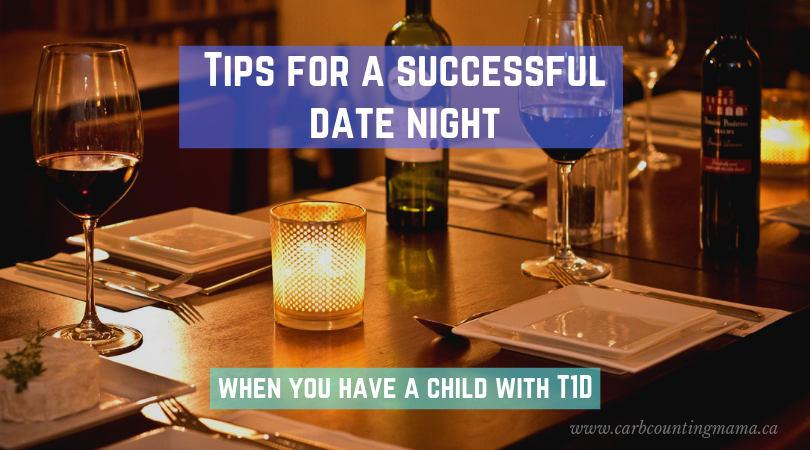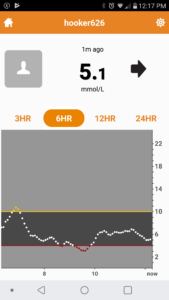So you want to go on a date night. Ever since your child’s diagnosis, you’ve been stressed, exhausted, and you feel your relationship with your partner being taken over by finger pokes, carb counting, and insulin injections. You deserve a night out. You need a night out. But it was difficult enough leaving your child with a babysitter before diabetes. How can you have a care-free experience with your partner if you’re constantly worried about how the babysitter is handling your child’s complex medical condition?
This post has been sponsored by Dexcom Canada. All opinions are mine.
But you’ve managed to convince yourself it’s possible
It’s official. Date night is happening. You’re going to enjoy a nice dinner and a movie…
Wait, that’s too boring. We’re putting diabetes in its place tonight. You’re going to have a blast with some drinks and axe throwing! (Probably not in that order though. We’re showing diabetes that we’re in charge, but we don’t want to end up drunk with an axe in our leg).
Step 1: We need a babysitter
This may seem counterintuitive, but in my experience, the best babysitter for a child with T1D is one who has no prior knowledge of T1D.
Yes, you read that right. Read it again. Think about it.
Since every person with T1D is different, someone with prior knowledge of T1 can actually be worse. People who already think they know everything are less likely to listen to what your child needs if it’s different from what they are familiar with.
People who you have to train from scratch are more likely to follow your instructions, without making suggestions on treatment changes (or, god forbid, doing things “their way” instead of the way your child needs).
Step 2: Training the babysitter
Training someone on how to care for a child with T1D can seem like a daunting task. But you have to remember, they’re watching your child for a few hours. They need to know important highlights. It won’t be like the training you got in the hospital at diagnosis.
Find someone who is willing to ask “stupid” questions. It’s better to have someone who will call and ask you rather than someone who will make the wrong decision and not contact you. Of course, there’s a limit. If you’ve trained them and they still think you give insulin for a low, find someone new!!
Take time training them. Spend a session or two showing them what to do while you are at home with them. Then do a practice run before the actual date.
Extra tips for peace of mind
Remote monitoring
Dexcom has been a lifesaver on date nights. Literally!
With Dexcom, the babysitter can notice a sudden drop in blood sugar levels much easier, and can be alerted in advance. And for us, with the Dexcom Follow app, whether we’re at a fancy dinner, watching a play, or going bungee jumping, we can check our son’s blood sugar numbers at a glance and text the babysitter with instructions if needed.
Instead of constantly being worried about the situation at home or paranoid that the babysitter will call with an emergency at any moment, we can enjoy being with each other thanks to Dexcom.
Cheat sheet
Writing up a one-page cheat sheet can be super helpful for the babysitter. Just the important stuff.
Include things like how to contact you, what to do for low or high blood sugar, when to check blood sugar levels, and where emergency supplies are located.
Here’s a sample T1D Babysitter Cheat Sheet for you to print and fill out for your next date night.
Timing
Timing your date properly can really help ease the anxiety and panic that comes with leaving your T1D child with a babysitter. Going out in between meals, or after the kids have already had dinner makes things simpler for the babysitter. They’re less likely to have to give insulin at those times which is much less pressure.
Of course, you can’t plan when your child will need a low treatment or insulin, but there are times for most people that are more predictable than others.
Food choices
I’m a big proponent of “eat how you ate before diagnosis”. If you were vegan, do T1D vegan. If you ate low carb or all organic, keep doing that with T1. Sunday pancakes? Figure out pancakes and blood sugars.
That said, when you’re leaving your child with a babysitter, sometimes it’s easier to choose something that you know is less likely to cause spikes and dips.
Lots of easy meals like pizza, kraft dinner and hot dogs, or chicken nuggets and fries, are high in carbs and fat and will cause prolonged highs that need additional boluses to correct. They can also cause a low before the food kicks in if you don’t time your insulin correctly.
So, while that meal may be easy for the babysitter, it’ll have you on a roller coaster all night after your lovely date.
Sticking to simpler, lower carb meals can be helpful to keep blood sugars more level for the babysitter (who is less experienced in T1D).
Adjustments
This one isn’t for everyone.
Some parents (especially when your child is very young) prefer to change the target blood sugar level for a babysitter. If you usually aim for 5.5mmol/L (100mg/dL), you might want to increase it a bit, say to 7.0mmol/L (126mg/dL).
Many people feel more comfortable with their child’s bg slightly higher, knowing that lows are less likely to happen during the evening out.
Everyone needs a night out
You can have one too! You just need to prepare a bit and have the tools to make it successful.
Now go, throw some axes. But seriously, don’t hit yourself in the leg… it hurts.
Happy Carb Counting!
~ Leah
What are your “top tips” for a successful date night? If you’re interested in Dexcom’s Continuous Glucose Monitoring System and Follow app, head over to Dexcom Canada for more info.


Leave a Reply